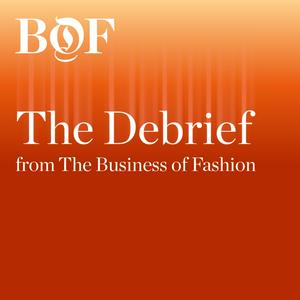What Happened to Pat McGrath Labs?
Pat McGrath is widely regarded as one of the most influential makeup artists of all time. Known simply as “Mother” to some in the industry, she’s been behind some of the most memorable runway beauty moments for decades. In 2015, she launched her namesake brand, Pat McGrath Labs, which quickly became a beauty phenomenon – going viral with its glittering gold pigment and reaching a $1 billion valuation just two years later.But almost a decade on, the business tells a different story. With its valuation now a fraction of what it once was, high executive turnover, limited product accessibility, and internal challenges, the brand’s future hangs in the balance – even as McGrath's own star continues to rise with a new role as beauty director for Louis Vuitton.The Business of Beauty editor Brennan Kilbane and executive editor Priya Rao, explore what went wrong and how the business can get back on track.Key Insights: In its early years, Pat McGrath Labs thrived as a high-concept beauty brand that translated runway artistry into consumer excitement. The first product, Gold 001, was a multipurpose pressed gold pigment that sold out within minutes and crashed the website. As Kilbane describes, the brand began as “a direct pipeline from her creative brain to the cosmetics market.” The initial success solidified McGrath’s cult status – and set high expectations for what came next.When Pat McGrath's 'glass skin' look went viral after the Maison Margiela couture show, it could have been a pivotal brand moment. But the product inspired by the look – and released more than a year later – failed to maintain momentum. “They tried to capitalise on it by scheduling a masterclass a week later,” says Kilbane, “but it wasn’t fast enough.” Additionally, according to Rao, the bigger issue with late deployment was product wearability: “It’s not something that’s everyday or wearable in any capacity.”Pat McGrath’s artistry is legendary, however operationally, Pat McGrath Labs fell flat. “Pat McGrath Labs was Pat McGrath. She is the CEO, she is the founder, she's the creative director – the buck stops with her,” says Kilbane. With final say on everything from product formulation to packaging, this all-encompassing control created a bottleneck that affected every part of the business. The result was a company where decision-making was slow and fragmented.With valuation plummeting and Sephora shelf space dwindling, both Kilbane and Rao agree that McGrath’s company needs a reset. “Does it need new investors? Probably,” says Rao. “But it also needs leadership and operational know-how for it to actually scale. Otherwise, it’s going to be a pet project in comparison with what she does with Louis Vuitton.” Kilbane adds, “Fixing the company culture is going to be integral – if not even more impactful than integral – to the brand’s longevity.”Additional Resources:What Happened to Pat McGrath Labs? | BoF Louis Vuitton to Launch Makeup Line | BoF Hosted on Acast. See acast.com/privacy for more information.

